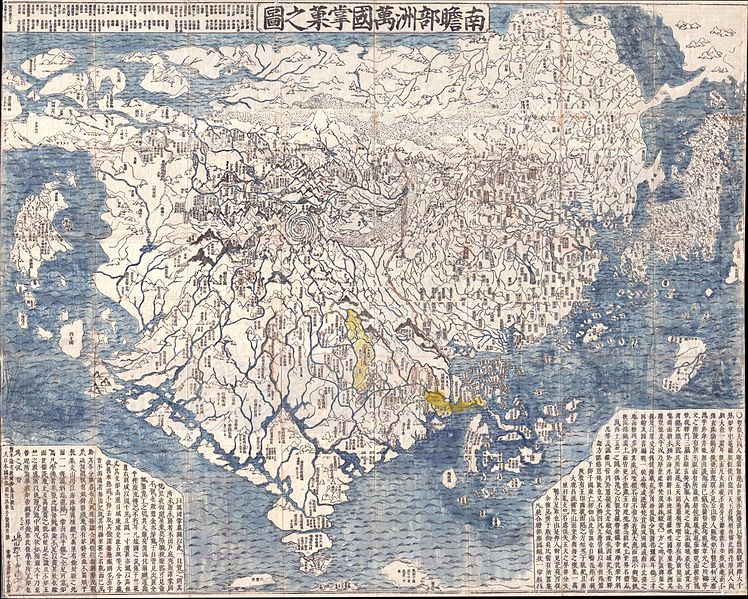File:1710 First Japanese Buddhist Map of the World Showing Europe, America, and Africa - Geographicus - NansenBushu-hotan-1710.jpg

Size of this preview: 748 × 599 pixels. Other resolutions: 300 × 240 pixels | 599 × 480 pixels | 958 × 768 pixels | 1,278 × 1,024 pixels | 2,556 × 2,048 pixels | 5,837 × 4,678 pixels.
Original file (5,837 × 4,678 pixels, file size: 7.26 MB, MIME type: image/jpeg)
File history
Click on a date/time to view the file as it appeared at that time.
| Date/Time | Thumbnail | Dimensions | User | Comment | |
|---|---|---|---|---|---|
| current | 00:23, 24 March 2011 |  | 5,837 × 4,678 (7.26 MB) | BotMultichillT | {{subst:User:Multichill/Geographicus |link=http://www.geographicus.com/P/AntiqueMap/NansenBushu-hotan-1710 |product_name=1710 First Japanese Buddhist Map of the World Showing Europe, America, and Africa |map_title=Nansenbushu Bankoku Shoka No Zu (Outlin |
File usage
The following pages on the English Wikipedia use this file (pages on other projects are not listed):
Global file usage
The following other wikis use this file:
- Usage on es.wikipedia.org
- Usage on hi.wikipedia.org
- Usage on it.wikipedia.org
- Usage on www.wikidata.org
